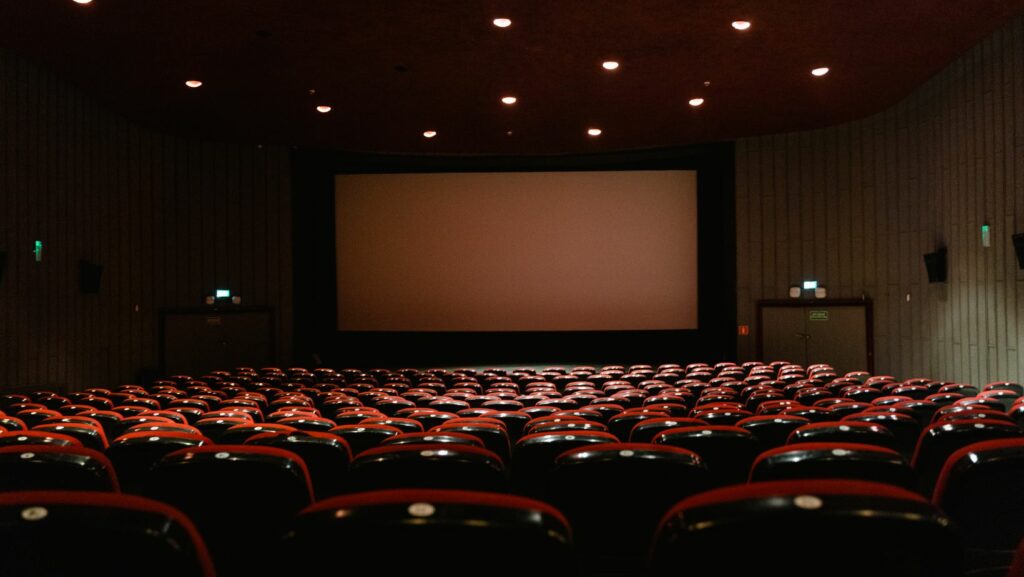Key Takeaways
- Streaming Services Dominance: The rise of platforms like Netflix and Disney+ has revolutionized film accessibility, leading to increased viewership and changes in consumption habits.
- Challenges for Traditional Theaters: Traditional cinemas are adapting to the preference for home viewing by offering unique experiences, such as immersive screenings and collaborations with streaming services.
- Technological Advancements: Innovations in virtual reality and visual effects are transforming storytelling and audience engagement, setting new standards in the film industry.
- Emphasis on Diversity and Inclusion: Filmmakers are prioritizing diverse representation and social relevance in their narratives, drawing from a wide range of experiences that resonate with broader audiences.
- Audience Engagement Techniques: Interactive screenings and social media strategies are increasingly important for connecting with viewers and enhancing the overall cinematic experience.
The world of cinema is constantly evolving, reflecting societal changes and technological advancements. As audiences seek fresh experiences, filmmakers are pushing boundaries, experimenting with storytelling techniques and visual styles. This dynamic landscape has given rise to intriguing trends that shape how stories are told and consumed.
From the rise of streaming platforms to the resurgence of immersive experiences, cinema trends are more than just fads; they signify shifts in viewer preferences and industry practices. Understanding these trends not only enhances the viewing experience but also provides insight into the future of film. As the industry adapts to new challenges and opportunities, staying informed about these developments is essential for any film enthusiast.
Cinema Trends
Cinema continues to evolve, reflecting significant changes in how audiences engage with film. Key trends, such as the rise of streaming services and the impact on traditional theaters, shape the industry landscape.
Rise of Streaming Services
 Streaming services dominate the film industry, providing convenient access to diverse content. Platforms like Netflix, Hulu, and Disney+ offer original films, increasing viewership and subscriber numbers. Additionally, they invest heavily in exclusive content, enticing creators and audiences alike. A 2023 report revealed that over 70% of U.S. households use at least one streaming service, indicating a shift in consumption habits. This trend leads to an increase in binge-watching and tailored content, as algorithms recommend films based on viewing history.
Streaming services dominate the film industry, providing convenient access to diverse content. Platforms like Netflix, Hulu, and Disney+ offer original films, increasing viewership and subscriber numbers. Additionally, they invest heavily in exclusive content, enticing creators and audiences alike. A 2023 report revealed that over 70% of U.S. households use at least one streaming service, indicating a shift in consumption habits. This trend leads to an increase in binge-watching and tailored content, as algorithms recommend films based on viewing history.
Impact on Traditional Theaters
Traditional theaters face challenges due to the streaming surge. Many audiences prefer home viewing for its comfort and accessibility. According to industry statistics, cinema attendance dropped by 40% since 2019, with viewers gravitating toward streaming options. However, theaters adapt by curating unique experiences, such as immersive screenings and premium formats like IMAX. Some cinemas collaborate with streaming services to showcase exclusive releases, creating a hybrid model that aims to attract audiences back. The ongoing evolution indicates that traditional theaters must innovate to thrive in a changing environment.
Influence of Technology
Technology significantly shapes cinema trends by transforming how films are created, distributed, and experienced. This evolution influences audience engagement and expectation, making it vital for the industry to embrace innovation.
Virtual Reality Experiences
Virtual reality (VR) experiences create immersive worlds that enhance storytelling. Filmmakers utilize VR technology to produce interactive narratives, allowing audiences to engage with characters and environments. In 2022, 30% of filmmakers reported using VR in their projects, reflecting its growing influence. Notable examples include “”The Invisible Man”” VR experience, which places viewers within a suspenseful narrative, and “”Strangers,”” a VR short that draws users into an emotional story. As VR technology becomes more accessible, its integration into mainstream cinema expands, offering fresh opportunities for creative storytelling.
Enhanced Visual Effects
Enhanced visual effects (VFX) push the boundaries of what is possible on screen. Techniques like motion capture and CGI (computer-generated imagery) create lifelike animations and breathtaking environments, elevating the cinematic experience. In 2023, blockbuster films like “”Avatar: The Way of Water”” utilized cutting-edge VFX, contributing to a 40% increase in box office revenue compared to previous years. Filmmakers increasingly invest in technology, with budgets for VFX reaching as high as $100 million for some films. This trend not only captivates audiences but also sets new industry standards for visual storytelling.
Thematic Shifts in Storytelling
Recent cinema trends reflect a strong emphasis on thematic shifts in storytelling, particularly around diversity, inclusion, and social relevance. Filmmakers increasingly prioritize representing varied experiences, creating richer narratives that resonate with broader audiences.
Focus on Diversity and Inclusion
Diversity and inclusion in storytelling become paramount as audiences demand representation across gender, race, and sexuality. Recent statistics show that films with diverse casts generate higher box office revenues. For example, the 2022 film “”Everything Everywhere All at Once”” received critical acclaim for its representation of Asian American culture and achieved over $100 million in global box office earnings. Many studios now actively seek out projects that amplify marginalized voices, fostering a more inclusive landscape. Such shifts not only enrich the narrative fabric of cinema but also reflect contemporary society’s diverse mosaic.
Exploration of Social Issues
Cinema increasingly explores social issues, reflecting pressing challenges faced by communities. Films address topics like climate change, mental health, and systemic inequality, engaging audiences in meaningful conversation. In 2021, “”The Trial of the Chicago 7″” tackled historical injustices and current political climates, garnering numerous accolades and sparking discussions around activism. This thematic focus cultivates awareness and inspires change, demonstrating cinema’s role as a platform for social commentary. As filmmakers continue to highlight relevant social issues, they contribute to a more informed and conscience-driven audience experience.
topics like climate change, mental health, and systemic inequality, engaging audiences in meaningful conversation. In 2021, “”The Trial of the Chicago 7″” tackled historical injustices and current political climates, garnering numerous accolades and sparking discussions around activism. This thematic focus cultivates awareness and inspires change, demonstrating cinema’s role as a platform for social commentary. As filmmakers continue to highlight relevant social issues, they contribute to a more informed and conscience-driven audience experience.
Audience Engagement Strategies
Engaging audiences has become a priority for filmmakers and theaters alike, as they adapt to changing viewer preferences. Interactive and social media strategies stand out as key methods for enhancing audience experiences.
Interactive Screenings
Interactive screenings create immersive experiences that significantly enhance audience participation. Theaters host events where viewers can engage with the film beyond passive watching. Activities like live Q&A sessions with filmmakers, themed costume parties, and audience voting on alternative endings increase investment in the storytelling process. For example, certain screenings of “”Rocky Horror Picture Show”” encourage audience involvement, allowing fans to act along with the film, fostering a unique sense of community. This level of interaction not only deepens emotional connections with the films but also attracts diverse demographic groups who appreciate the noticeable effort to create memorable experiences.
Use of Social Media
Social media plays a crucial role in cultivating audience engagement before and after film releases. Platforms like Instagram, TikTok, and Twitter enable studios to create buzz through teasers, behind-the-scenes content, and interactive polls. Engaging influencers to share reactions and host live discussions amplifies reach and fosters viewer connections. According to a recent study, films marketed through social media campaigns see a 30% increase in attendance in comparison to those without a significant online presence. Initiatives such as hashtag challenges and user-generated content campaigns invite audiences to participate actively, generating excitement and enhancing overall community engagement around film releases. The landscape of cinema is undergoing a profound transformation shaped by technological advancements and shifting audience preferences. As streaming services continue to dominate the market filmmakers are embracing innovative storytelling techniques and immersive experiences to captivate viewers. The emphasis on diversity and social issues not only enriches narratives but also resonates deeply with audiences seeking relevance and connection. With traditional theaters adapting to these changes through unique offerings and interactive events the future of cinema looks promising. By staying attuned to these trends film enthusiasts can gain a deeper appreciation for the evolving art form and its potential to inspire and engage. The journey of cinema is just beginning and it promises to be an exciting ride ahead.



